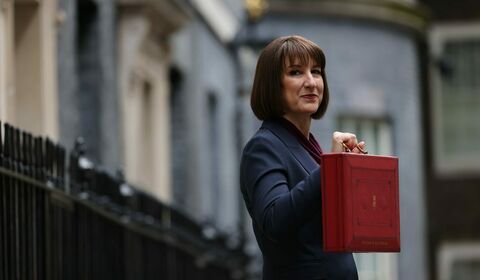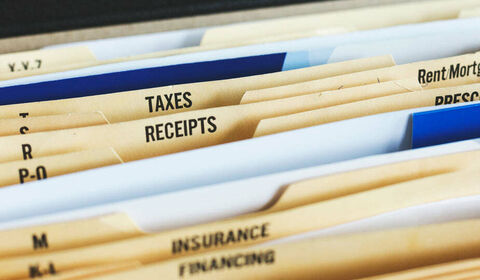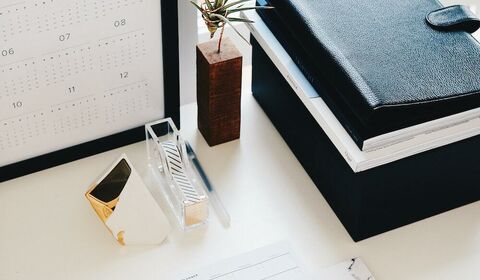Understanding Capital Allowances

Capital Allowances
The rules that govern the purchase of capital equipment such as computer equipment, vehicles, and machinery by businesses are different from those for day-to-day business expenses, which can be deducted from business income when calculating your taxable profits. The expression ‘Capital allowances’ describes the allowances that allow businesses to secure tax relief for certain capital expenditure.
Capital allowances are available in respect of:
- Most ‘plant and machinery’ used for business purposes;
- Certain research and development expenditure;
- Qualifying expenditure on new non-residential buildings.
The entitlement to claim capital allowances is usually unaffected by how you pay for the items in question. For example, if you buy an item on a hire purchase, you can claim capital allowances based on the full normal cost of the item. The interest you pay and other charges are not part of the capital cost of the item but can usually be counted as deductible business expenses.
If you simply rent capital equipment and do not secure ownership of the items, no capital allowances can be claimed. Instead, the payments due, under what is usually called an ‘operating lease’, are simply deductible as a normal business expense.
Claiming capital allowances
All claims for capital allowances are made through the business’s annual tax returns.
You do not need to claim the full amount of the available allowance. You might limit your claims to capital allowances to avoid wasting other allowances or reliefs. The exact mechanism for claiming capital allowances and the associated time limits depends on whether you're self-employed or a partner and pay Income Tax or a company or organisation that pays Corporation Tax.
Plant & Machinery
The term ‘Plant and Machinery’ (P&M) includes items such as cars, vans, machines, equipment, computers, furniture and other similar items used by a business.
Some of the rules related to P&M depend on the nature of the expenditure and how much money has been spent on P&M during the accounting period. There are also special rules to provide tax relief for items of P&M you used privately before using them in your business and items that you only partly use for business purposes.
Annual Investment Allowance (AIA)
The AIA is available to all businesses regardless of size. This AIA allows businesses to write off 100% of the cost of qualifying P&M, up to the allowed maximum, against taxable profits.
The AIA was set at £200,000 for all qualifying expenditure on or after 1 January 2016. Following the pandemic, this limit had been temporarily increased (with a number of subsequent extensions) to £1 million.
This increased threshold was set to expire on 31 March 2023, but it was confirmed as part of the Growth Plan measures (September 2022), that the limit would be permanently extended to £1 million from 1 April 2023.
First-Year Allowances
In the Spring Budget 2023, the Chancellor announced the introduction of a new 100% first-year capital allowance for qualifying plant and machinery assets.
The new measure, known as full expensing, applies from 1 April 2023 until 31 March 2026.
This measure effectively replaces the 130% super-deduction, which ended on 31 March 2023.
Under full expensing, companies can claim tax relief of up to 25p for every pound they invest. The relief can only be claimed by companies.
For “special rate” expenditure that doesn’t qualify for full expensing, a 50% FYA can be claimed instead. The 50% FYA was introduced alongside the super-deduction and was due to end on 31 March 2023. However, it was extended by three years to 31 March 2026.
Writing Down Allowances
For plant and machinery expenditure which does not qualify for the AIA or First-Year Allowances a standard 18% Writing Down Allowance (WDA) is available. This is based on the cost of the items in the year they are acquired. There is a lower 6% rate for certain long-life assets and integral features.
Cars
Qualifying expenditure on cars must be allocated to one of two general P&M pools of expenditure. Which pool is appropriate depends on the car’s CO2 emissions.
Cars that have an element of non-business use, by the self-employed, must be allocated to a single asset pool to enable the private use adjustment to be made.
Special rate pool and long-life assets
This term refers to assets with an expected useful life of more than 25 years. The tax allowance here is set at 6% of the written down value each year with all expenditure on long life assets being added to a special 6% rate pool.
Integral features of buildings and thermal insulation
The same relief, as for other long life assets, is also available for the cost of new or replacement 'integral features' of a building.
Such features are:
- Cold water systems.
- External solar shading.
- Lifts, escalators, and moving walkways.
- Active facades electrical systems (including lighting systems).
- Space or water-heating systems, powered systems of ventilation, air cooling or air purification, and any floor or ceiling comprised in such systems.
Businesses can also claim the 6% allowance each year for expenditure on installing thermal insulation in all existing buildings used for any qualifying business purpose - other than if it's a residential property business.
Research and Development
R&D tax credits were introduced for Small and Medium Sized Enterprises (SMEs) in 2000 and for large companies in 2002. R&D credits are a CT relief which were introduced to encourage innovation and enterprise within the UK economy. SMEs can claim R&D tax credits of 186%.
A new R&D Intensive SME payable credit was introduced from April 2023 at a rate of 14.5%.
The relief is available to loss-making companies where qualifying R&D expenditure makes up at least 30% of total expenditure.
Large companies can claim a 20% R&D expenditure credit for qualifying expenditure.
Structures and buildings allowance (SBA)
The Structures and Buildings Allowance (SBA) was introduced in 2018. The SBA provides tax relief for qualifying capital expenditure on new non-residential buildings where all contracts for the physical construction works are entered into on or after 29 October 2018. The relief does not include the cost of land or dwellings. The SBA is set as a 3% annual allowance calculated on a straight-line basis.
Assets leased out
In certain circumstances businesses can claim capital allowances for assets they own and lease to other businesses.
Private use
This section is only relevant if you operate your business as a sole trader or partnership and is therefore not relevant if your business is a limited company.
Where a business asset is used partly for private purposes, the entitlement to capital allowances is restricted. The asset is not included in any pool but is the subject of a separate calculation.
The allowances are computed in the normal way so can in theory attract the 100% AIA.
However, only the business use proportion is allowed for tax purposes. The private use of assets by employees does not require any restriction on capital allowances.
Page updated on 13/05/2024


